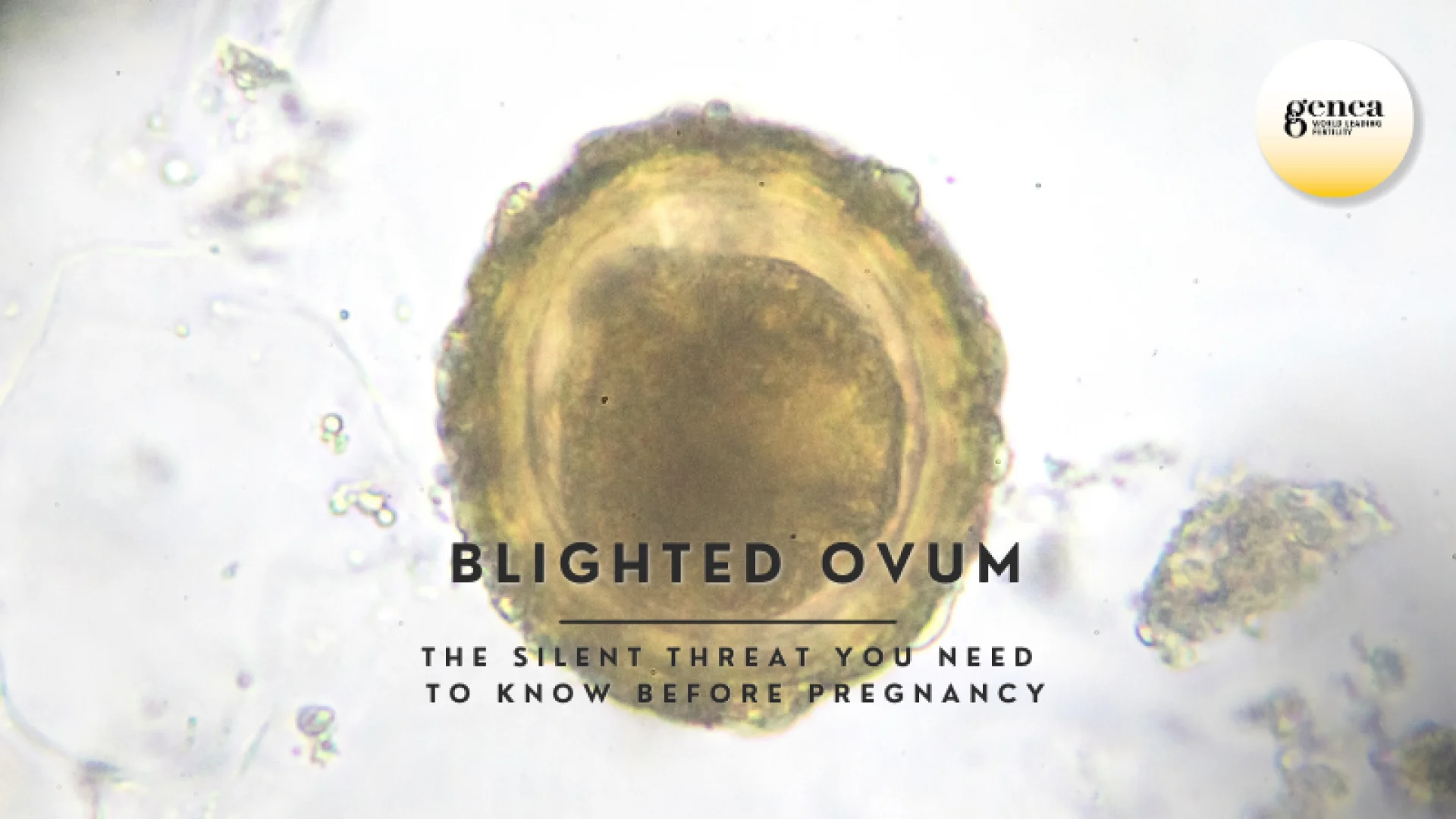Blighted Ovum: The Silent Threat You Need to Know Before Pregnancy

When planning for pregnancy, most couples focus on prenatal vitamins, healthy diets, and tracking ovulation cycles. Few, however, are prepared for the possibility of a blighted ovum-a silent complication that affects more pregnancies than many realize.
Studies have found that approximately 15.6% of first-trimester pregnancies involve a blighted ovum. Looking at the bigger picture, about 10-15% of all pregnancies end in miscarriage during the first trimester - and remarkably, half of these miscarriages are caused by blighted ovum.
So if you or someone you know has gone through this experience, please don't feel abnormal or different. This is something that affects many women, and most importantly, you're definitely not facing this alone. Let's understand more about this condition together.
What is a Blighted Ovum?
A blighted ovum (or anembryonic pregnancy) occurs when fertilization happens and a gestational sac develops and implants in the uterus, but the embryo itself never forms properly.
Think of it as the structure of a pregnancy being set up, but the embryo-the main part-fails to develop. The placental tissue still grows and produces hCG, the hormone that leads to positive pregnancy tests and early symptoms. But on ultrasound, the sac is empty-25mm or larger-with no embryo or heartbeat visible.
This often occurs in the first 8-13 weeks of pregnancy, before any symptoms suggest something is wrong. It's heartbreaking, and most importantly, it's not your fault.
Recurrent Blighted Ovum & Chromosomal Abnormalities
Most blighted ovums happen due to chromosomal abnormalities in the fertilized egg. One instance is usually random, but if it happens more than once, it could suggest an underlying genetic issue.
In these cases, genetic counseling and testing may help identify possible causes and guide your next steps.
Symptoms of Blighted Ovum
A blighted ovum often mimics a normal pregnancy early on. You might notice:
- Positive pregnancy test
- Missed period
- Breast tenderness
- Morning sickness
Later signs may include:
- Light spotting
- Cramping
- Decreasing pregnancy symptoms
- No heartbeat on ultrasound
Causes and Risk Factors of Blighted Ovum
Most cases are due to chromosomal issues that occur naturally. The body can detect problems and often ends the pregnancy early to protect long-term health.
Factors that may increase risk include:
- Age matters - Women over 35 tend to have more chromosomal changes in their eggs, which naturally comes with age.
- Past miscarriages - Having lost a pregnancy before may point to something deeper worth checking.
- Lifestyle habits - Smoking or drinking heavily on a regular basis can make early development harder.
- Health conditions - Certain issues, especially those that affect blood flow or hormones, might create an environment thats not ideal for a pregnancy to grow.
Treatment Options for Blighted Ovum

Experiencing a blighted ovum once can be emotionally difficult-facing it more than once can feel overwhelming. Recurrent cases, often due to chromosomal abnormalities that prevent proper embryo development, may lead couples to seek clearer answers.
One option that can help is Preimplantation Genetic Testing for Aneuploidies (PGT-A), a screening method used during IVF to identify embryos with the correct number of chromosomes. By selecting only healthy embryos, PGT-A improves the chances of a successful pregnancy and lowers the risk of miscarriage.
How Can PGT-A Help Prevent Recurrent Blighted Ovum?
By selecting only embryos with the correct number of chromosomes, PGT-A reduces the chances of transferring embryos that may result in a blighted ovum-directly addressing a key cause of early pregnancy failure.
Who Might Benefit From PGT-A?
PGT-A is especially recommended for:
- Women over 35, due to increased risk of chromosomal issues
- Those with past pregnancies affected by chromosomal problems
- People with recurrent miscarriage history
- Individuals who have had multiple failed embryo transfers
Blighted Ovum and Fertility Treatments
How Blighted Ovum Affects ICSI and IUI
For couples with a history of blighted ovum, choosing the right fertility treatment is crucial. At Genea, while we do not offer IVF, we specialize in ICSI (Intracytoplasmic Sperm Injection) and IUI (Intrauterine Insemination) as tailored solutions to different fertility needs. Here's how each option compares :
|
Treatment Option
|
ICSI (Intracytoplasmic Sperm Injection)
|
IUI (Intrauterine Insemination)
|
| How it works |
A single sperm is injected directly into an egg. |
Prepared sperm is inserted into the uterus during ovulation. |
| Best for |
Male factor infertility, failed fertilization, or genetic screening needs. |
Mild infertility or unexplained infertility cases. |
| PGT-A Compatibility |
Yes - can be combined with PGT-A for embryo chromosomal screening. |
No - does not allow for embryo testing before implantation. |
| Blighted Ovum Risk |
Lower - embryos can be screened for chromosomal health before transfer. |
Higher - chromosomal abnormalities cannot be detected beforehand. |
| Success Potential |
Higher for those with previous blighted ovum when paired with PGT-A. |
May be less effective for those with recurrent early losses. |
Choosing between ICSI and IUI depends on various factors, including your fertility history, medical conditions, and personal goals.

At Genea, we offer full-service PGT-A as part of our personalized fertility care. Our integrated IVF and genetic testing approach ensures every step of your journey is handled with precision and compassion.


